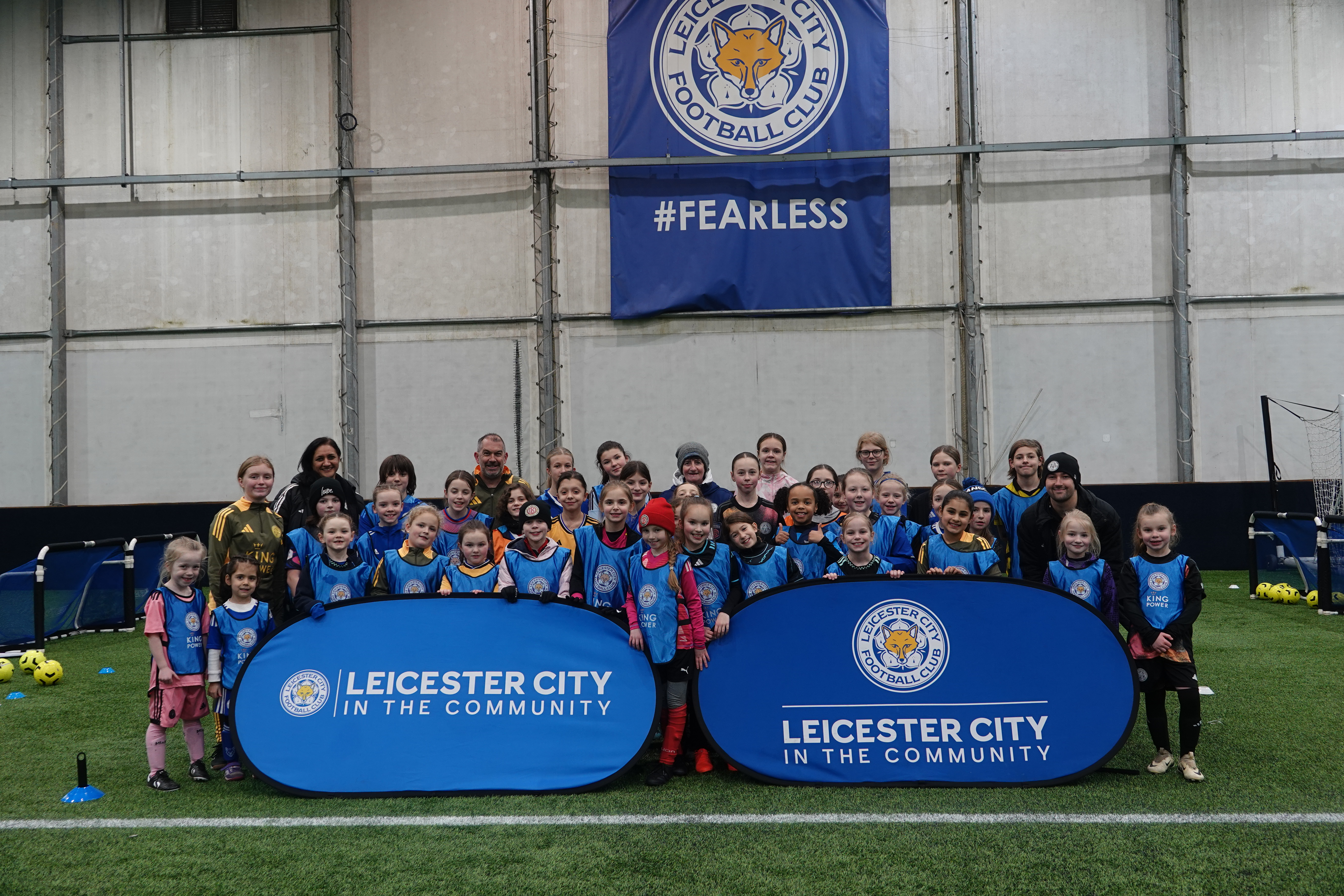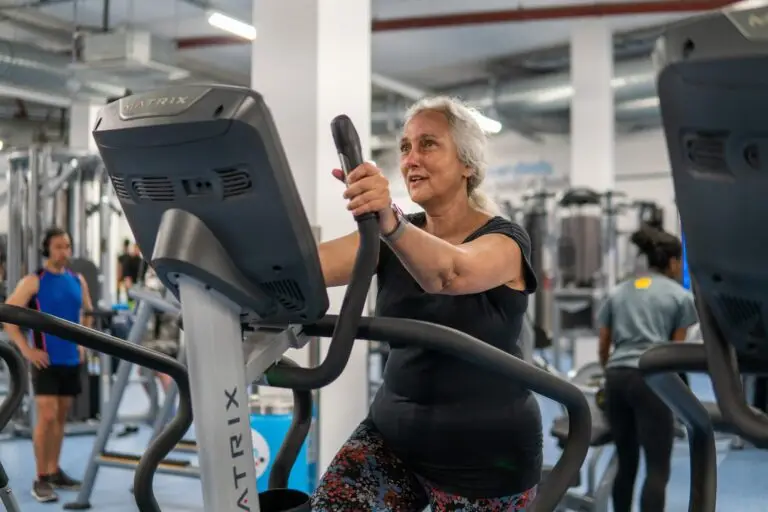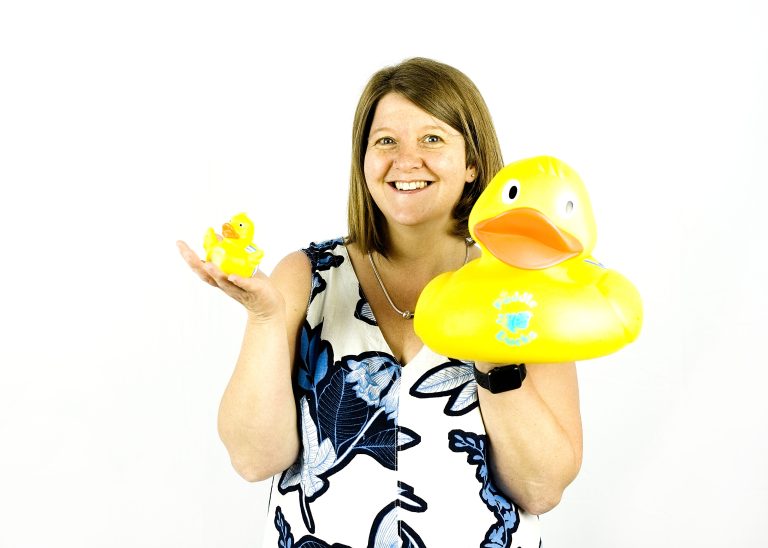“You have to see it to believe it” – how community sport and local role models can keep girls engaged in physical activity
Playing host for England Women’s final match before heading to Switzerland for the UEFA Women’s Euro 2025, and the CIMSPA Conference later on this year, it’s only right that we took a trip to King Power Stadium to see Leicester City in the Community’s pioneering work in keeping girls engaged in sport all year around through their programme, Active Girls.
Women’s football has exploded over recent years, and rightly so; 53% of women’s football fans developed their interest in the game since 2021, coinciding with the rise of England Lionesses and their monumental success.
With the mainstream media picking up on the hysteria, there is a huge buzz around landmark competitions. Multiple major tournaments happening in summer 2025: England and Wales will be taking part in the UEFA Women’s Euro, England will be the home of the Women’s Rugby World Cup, and both men and women taking part in The Hundred, Wimbledon and the World Athletic Championships.
But outside of these competitions and the focus shifts away from large-scale girls’ participation campaigns. How are we keeping our girls and women engaged in sport and physical activity when the spotlight dims?
Research from Women in Sport shows that whilst the number of girls who are dreaming of reaching the top of sport have risen to 38% in 2024 from 29% the year before, there still remains a wider gender gap, with boys dreaming reaching 59%.
There is definitely a correlation between recent women’s international football successes and the likes of Keely Hodgkinson being at the top of her game in the 2024 Paris Olympics with the increase of girls aspiring to be sporting athletes.
Now that the who they want to be has been established and the excitement has been instilled, the question now is where can girls feel empowered to participate?
Enter community sport organisation Leicester City in the Community and their Active Girls programme. Co-funded by the Premier League Charitable Fund through their Premier League Kicks programme, and the organisation’s own football development programme, the girls-only initiative follows the success of their Football Foundation-funded Active Women project, which are sessions aimed at women aged 18-64.
The programme is run by a mix of community coaches, apprentice coaches and volunteers, delivering football amongst other sports as well as mentoring and social events.
Looking out over the pitch, Apprentice Community Coach Olivia Hancock reflects on her time as a young girl growing up and wanting to play sport:
“I’ve been through that experience when I was younger of being told thar girls don’t play football or girls can’t play football, so I’m very passionate about getting girls active. Thankfully, it seems that we have moved on a bit from those thoughts.
“I know when I was younger, I would have loved something like Active Girls to come to.”
40% of girls do not take part in sport regularly, which is a much larger proportion than boys, which sits at 23%. Women in Sport state that girls have said that the reasons for this include stereotyping, lack of encouragement, lack of value placed on sport for girls compared to boys, less funding and fewer opportunities.
One of the crucial elements of Active Girls is that a number of sessions are completely free to attend and have sessions in multiple areas of the city and county. Sessions run all year round – there are after school sessions on weekdays throughout term time, and football camps and all-day events for when the school holiday arrives so there is a constant touchpoint for the demographic. The club community organisation has put accessibility as the central point – if you are local and want to come and try sport, whether it’s tomorrow or in a month’s time, there are no barriers to participation.
So, sessions have been made accessible and easy to attend – tick. But what keeps girls coming back and attending?
A sense of community. A sense of belonging. A sense of safety.
Olivia talks about the sessions:
“We openly advertise that it’s a girls-only space, with girls-only activities. This is such an important point to get across, as some girls don’t feel confident playing sport with male counterparts, as well as the judgement that they think they may face being a girl taking part.”
“Obviously, there are stigmas still which we are trying to break down. So having a girls-only space, all year around and not just as a ‘one-off special’ block of sessions, is such an important thing for them – feeling accepted in an environment where they feel safe and being able to have fun with other girls.”

A whole-person approach
The sport sessions are just one arm of the Active Girls programme.
To keep girls engaged and to also encourage those who are not confident or interested in playing sport straight away, a whole-person approach is needed.
To help get to know each other, girls have been given opportunities outside of sports sessions, such as attending workshops on various topics including periods, knife crime and first aid, as well as more relaxed sessions named ‘girls night out’, which includes watching films, eating snacks, playing games and interacting with each other.
Olivia explains:
“We recognise that not everyone wants to play sport every single day, and it can be easy for girls to disengage if the same session is repeated over and over again. So being able to mentor, provide educational workshops and social days is another way to encourage young people to participate with us.
“I just love seeing the progression from the girls – they tend to come for the first time and be quite shy. So, seeing them attending the girls night out events allow them to be open and come out of their shell a bit.”
Mentorship is also part of the engagement methods. Engaging girls past participating and inviting them to peer behind the lens; what goes into planning a session, the logistics, the objectives and deciding what games are played. With this they can develop their knowledge not just around the sport, but also around the coach pathway should they wish to take an interest, like one participant that Olivia coaches:
“There is one girl that is going down the volunteering route with us.
“From when she first joined seven months ago in October, she has progressed a lot. She is interested in coaching and putting her thoughts forward and has even looked into coaching qualifications. To hear that is lovely and it shows that coaches do have an impact on people.”
Recruitment
There is strong evidence in the community organisation that this method of engagement works. Still a young person herself, it wasn’t long ago that Olivia was also a participant.
Sarah Jones, Community Development Manager at Leicester City in the Community, talks through the organisation’s ‘grow your own’ recruitment strategy:
“We have a target of having 30% of our workforce from our participant base. It’s massively important across all of our projects – if you can see it, you can be it.
“We’ve learnt that participants understand our projects better than anybody else and they’re more passionate about our projects than anybody else – they’re the role models of the future.
A great way of recruiting this way is through the apprenticeship pathway, as you can begin at any point in your career, no matter your experience. As an apprentice coach through the Coach Core Foundation, Olivia is able to make a difference to the girls she coaches in a real-life working environment alongside her own education and training:
“For young people like Olivia to come in and do the job, get to meet people and gain lots of different experiences, it’s great for her personal development. We love being able to give these opportunities and help our local people develop.
“Obviously, they’re young people, so they understand young people and make the perfect role models for our participants. It’s been so important to have the right people in coaching positions – people engage more, they open up more and talk about what they want to do with them, which in turn helps us develop our projects to suit the needs of our community more effectively.”
Whilst major competitions draw our young girls in, it’s local coaches that have a frequent touch point with our young people to keep them coming back. Olivia reflects:
“Being someone who couldn’t access something like this when I was younger, to now being able to be involved and be able to inspire the next generation of young people and give them a voice is something that I’m really proud of.
“I wish there was someone like me to look up to when I was younger, to be that role model. There were football players obviously – but having someone in my local area that had the same upbringing as me.
“They are relatable, reachable and someone you are able to connect to. It’s a really rewarding feeling.”
This approach is clearly working – Leicester City in the Community state that over the past year, over 50% of their football development participants are girls.
Community organisations are giving young people a voice, and not just when the whole world is listening – but all year round.








